PHOTOS: Sojourn back to the landscapes and wildlife of Namibia

For over two weeks, photographer Gordon Donovan traveled more than 2,700 miles throughout Namibia, across deserts, grasslands and mountains. Armed with two cameras and an assortment of lenses, he journeyed to Sossusvlei, a photographer’s paradise of rich colors and texture. The final 10 days of his journey were a one-man road trip through the vast landscapes of Etosha National Park to capture the region’s thriving wildlife, natural beauty and incredible night skies.
It had been less than a year since my last trip to the southern African nation of Namibia. I would see photos from my previous trips and postings on social media from friends there, longing to be back in the heat, photographing the beautiful wide-open desert landscapes and grasslands filled with wildlife. It was time to go back, and I booked another trip. But I would have to wait several months.
My friends Kathryn Haylett of Your Safari and fellow photographers Bruce Colin and Jandré Germishuizen can understand. Africa changed them, and they now have it in their spirit. When we catch up, it’s all we can talk about … how we miss Africa.

Back home, the quiet landscapes feel like a secret place or hideaway, and they are different every time. As the weather changes, the animals move around, and no location is quite the same. A hot spot one week or a year earlier is now quiet. Another location I never thought of going to might now be abundant with wildlife. That’s the challenge. Do I search for animals alone in the medium-sized SUV I rented or wait patiently at a watering hole in 100-degree heat for wildlife to come by for a drink?
Then there are the places I still have not visited in Namibia. That is why I want to go back, as opposed to the better-known African countries. There’s the Caprivi Strip in the north, the ghost towns in the south, the many shipwrecks along the dunes on the Atlantic coast and Sossusvlei.

I love being alone in the wild. I have made friends there and I know what to expect. In Etosha National Park you can do a self-drive and do not need a guide. There’s a sense of adventure and freedom. There’s no cellphone service and limited internet access, especially when you move away from the cities.
Loneliness does creep into the mind from time to time, but you will find fellow adventurers on the road to swap stories of animal sightings. Handwritten letters given to me by friends back home were a gift to read. It’s all worth it, once you find something unique to photograph. That darkness is lifted, and you get a warm feeling that you’ve got something special.
I tried to visit a place called Sossusvlei during my last visit but didn’t make it. I was warned that the drive was too far and unsafe, and that if I did go, I should stay there a few nights. I thought I would allow for some great photos of the deserts and mountains driving at night. I now know that would be very dangerous.

The beginning of my 15-day journey was plagued with problems: A camera required a major repair and the airline canceled my flight without notifying me, which led to some last-minute itinerary changes. On my first full day in Namibia, the truck I leased broke down and I waited hours for roadside assistance. I had to skip my first planned destination, Spreetshoogte Pass, and head straight for Sesriem, the campsite and the park entrance to Sossusvlei.
I arrived shortly before dark, and had some time to visit Sossusvlei and Deadvlei to survey the area and capture the sunset. Deadvlei is a paradise for photographers, with the contrast of pitch-black, dead camel thorn trees on dried up bleached-white clay surface. The rusty-red dunes that stand 1,000 feet high and the deep-blue skies make for breathtaking images. I arrived the next morning before dawn, to capture the sunrise in the soup bowl of dunes among the 800-year-old dead trees. Long, shifting shadows formed behind the trees as the sun rose and passed over the small, dried-out valley.
People who climbed dunes for the sunrise descended to take photos and did get in the way at times. But patience is part of the job. Some people came over to chat, and others asked if I minded photographing them. By late morning, when the clay-white surface became a frying pan, people would leave, and I was able to take clean pictures with no one in the background. Locals advised me against shooting in Deadvlei at night because of the snakes and scorpions. But I was able to photograph the brightly lit African sky during my final night at Sossusvlei dune camp.
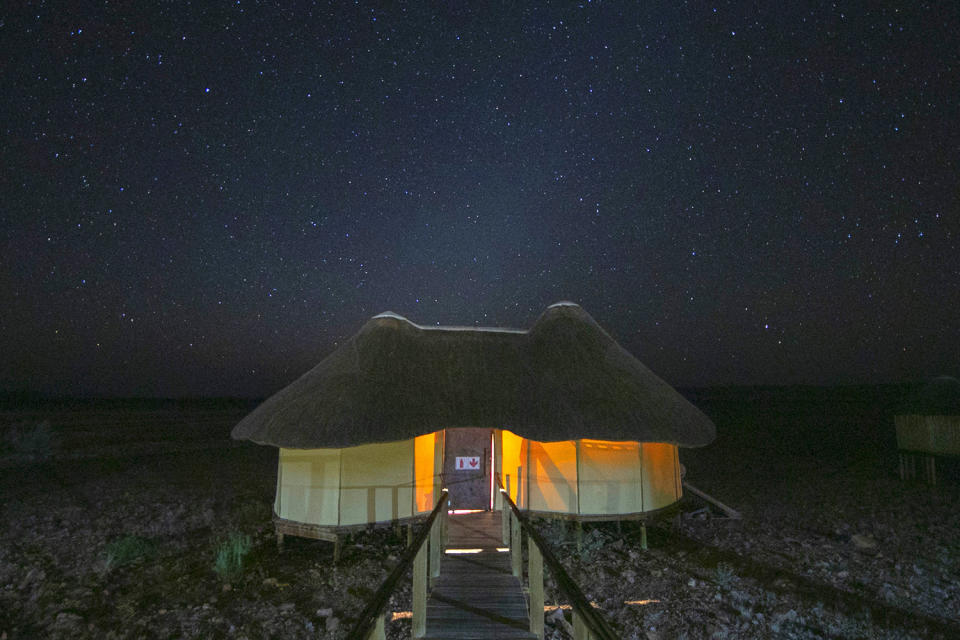
I had plans to photograph the sunsets and night skies every evening after dinner, but the weather didn’t permit it. Heavy rains pounded the area several times while I was at Okaukuejo and Halai in Etosha National Park. This made it hard to photograph wildlife, not only because of the rain itself but because the puddles drew animals away from the water holes where they normally gathered. I spent hours sitting in a hot vehicle in the intense heat seeking out chance encounters.
My first morning in Etosha, I visited a water hole famous for its lion population. I spotted animals in the road — four lionesses ripping apart a springbok, with a few jackals lurking to pick up scraps of meat. Later that day, I visited a water hole where I had previously had a lot of luck. I saw herds of elephants arriving one after the other to bathe and to drink in the cool waters. It was a great day so far.
Later that day, I encountered three young male lions huddled under a tree near an active water hole at Nebrowni. I sat tight and watched one approach the zebra and springbok gathered at the water, the two other lions following. The one in front leaped at a springbok and grabbed it by the neck, while the others attacked its lower extremities, tearing their prey apart.

The lions fought over the carcass, and one ran off with a leg. An older male lion appeared and joined the tussle. The young males, covered in blood, fought off the older lion before ripping apart the remains of the springbok and running off in different directions. The older lion chased and caught the one with the head and bits of the torso and stole them. He walked back toward me and devoured the meal 15 feet from my vehicle.
It started to rain at sunset, a foretaste of the weather the next day. Puddles in the road may be good for some photos, but the animals will not be going to the water holes. It’s Africa, and you never know. The sunset was dramatic, with bright, pumpkin-colored skies, rain in the near distance and lightning flashing in the clouds.

The next day there were puddles everywhere, covering the roads. Driving was hard, because I couldn’t tell how deep or rocky the roads were. I noticed something in the water but approached cautiously, recalling a time in Big Cypress Swamp in the Everglades when a 14-foot-long alligator crawled out of a puddle like this. Closer up, I saw it was a hyena bathing and relaxing in the water like a tourist at a swimming pool in Miami. I fired off pictures with his back toward me, but eventually he turned to investigate the sound. I moved in closer, but he scuttled off into the brush. I drove past the large puddle and turned around in hopes he would return. Not a chance. I had ruined his leisure.
I returned to the water hole where I had seen the lions. In the distance, several lionesses approached. One grabbed a cub and sought shade in a culvert under the road. I heard her growl a warning. Several days earlier, three male lions had been seen nearby. They were young and seeking to start their own pride, which would require them to kill the offspring of other male lions, but the mothers protected their cubs.
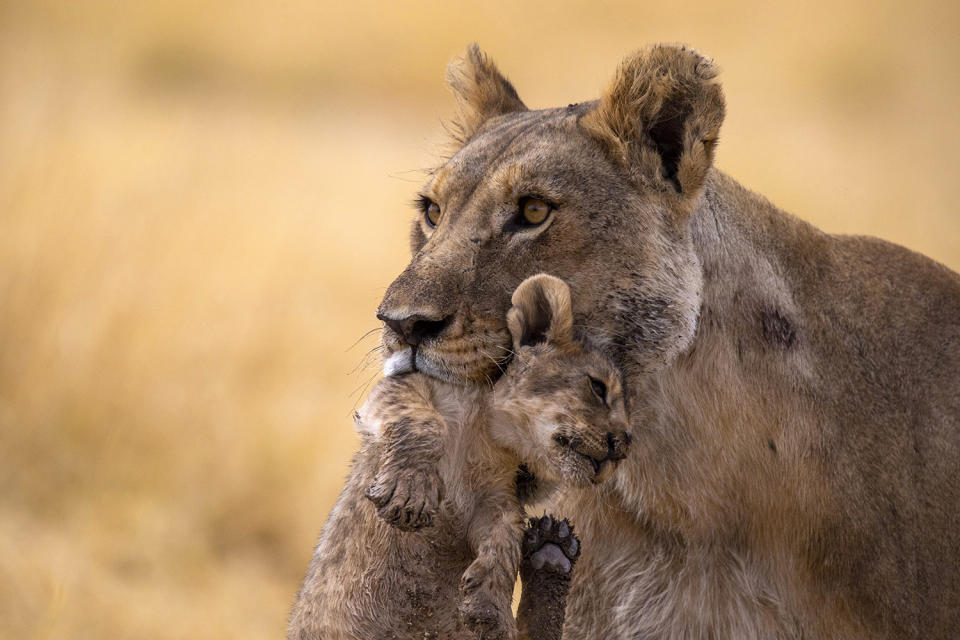
The other lionesses wandered with their cubs through the yellow grass toward the drainpipe to rest for the day. The two cubs played in a clearing under the watchful eye of the females. Cries from the baby cats made me homesick for my little pride of cats back home. The lionesses disappeared into one of the drains under the road to nap the day away. As I headed back to the water hole, another lioness approached for a long cool drink, before escaping from the heat in the shade of the culverts.
The day had been a success already, and it was only 10 a.m. I returned to Okaukuejo for fuel and a tire check. I looked for leopards and more lions on winding roads lined by brush and trees. I saw giraffes, springboks, zebras and elephants, but I was after cats. Finally, I found a young leopard. I watched it as it rested for hours in the shade of a tree. I waited for a clean shot, and finally the cat did what all cats do. He got up, yawned, stretched and stared at me. Then he repositioned himself and lay down.

As I trekked east across Etosha, the big cats became more and more scarce. I should have stayed longer at Halai, situated in the center of Etosha, in proximity to all the camps and water holes. But there are some real bad roads around Halai, even for a 4×4. For the last three days at Namutoni, I was done. No big cats, tired of driving and thinking of the 32-hour trip back to JFK. But I still wanted to see a cheetah.
Finally, on the last day, under a tree, a cheetah was napping. I sat there for four hours waiting, when he finally moved, stretched, yawned and walked off in the opposite direction. I was tempted to follow him into the brush, but it would have meant breaking a cardinal rule of the park.

A local Namibian couple who photograph lions in the park said the wildlife had been plentiful until just before I arrived. Now they were struggling to find wildlife too. All I could think about was adjusting my itinerary the next time so I’d start on the eastern side of Etosha and head west toward the coast.
In the following weeks, I was immediately caught up with the holiday season and other projects. My impeccable tan has faded and the jet lag has subsided. I edited many photos on the flight home, but once back in New York, I avoided looking at my photos for a long time. They would make me yearn to be back in the warmer temperatures photographing the wide-open desert landscapes and grasslands filled with wildlife.
Now I walk through the city looking to escape the crowds, wondering why I even came back. Sometimes, though, on my way to or from work, I think about my recent adventure and smile. I imagine my fellow commuters are wondering what could make me so happy on a New York subway.
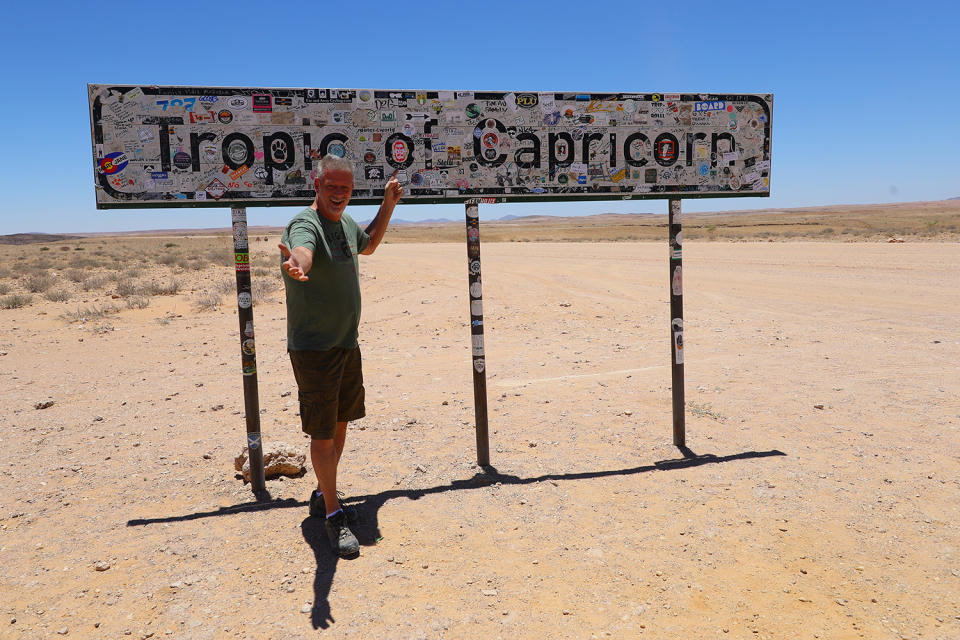
_____
See more images from Sossusvlei and Etosha:
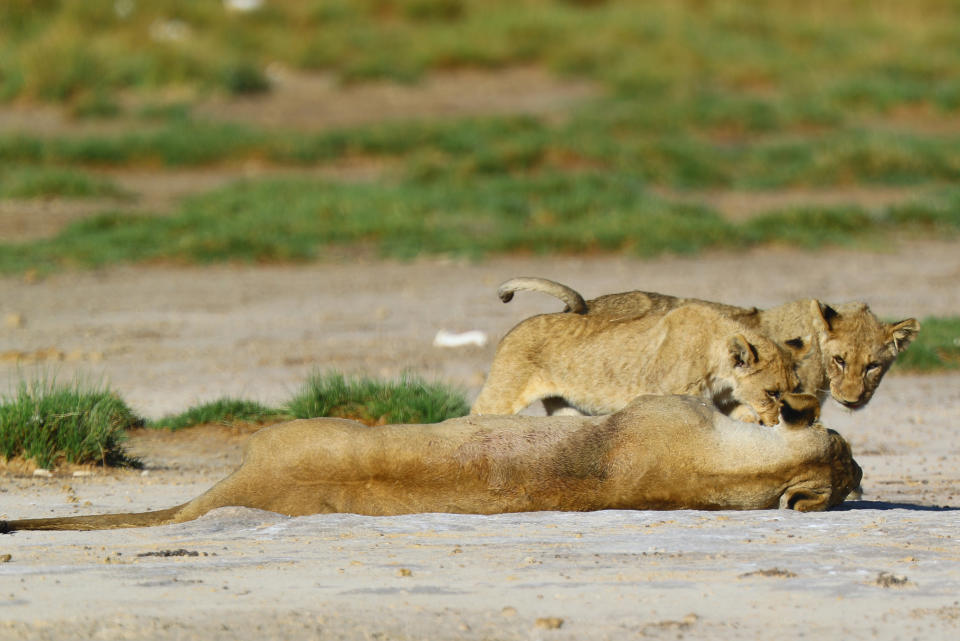




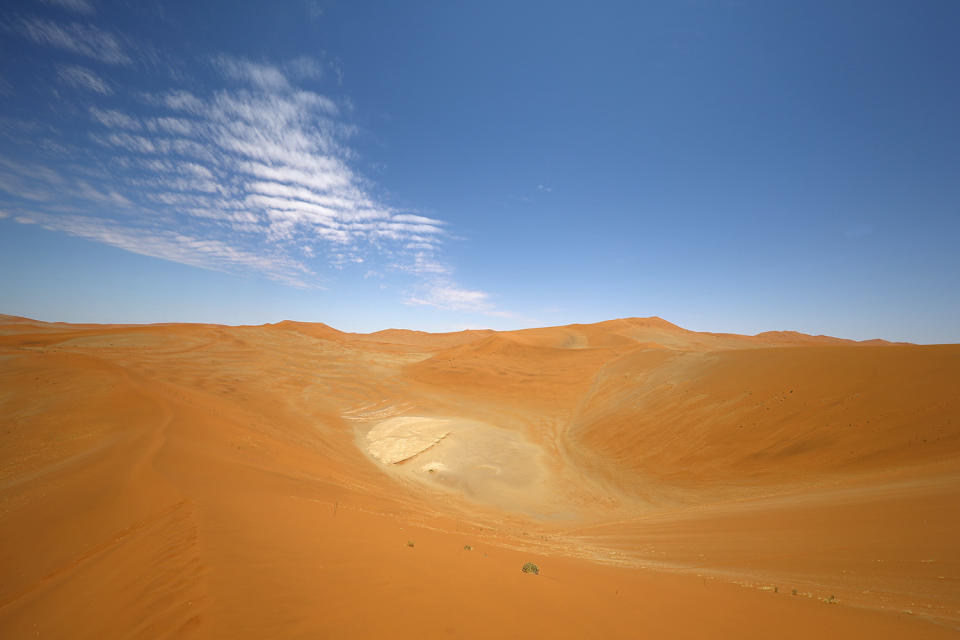

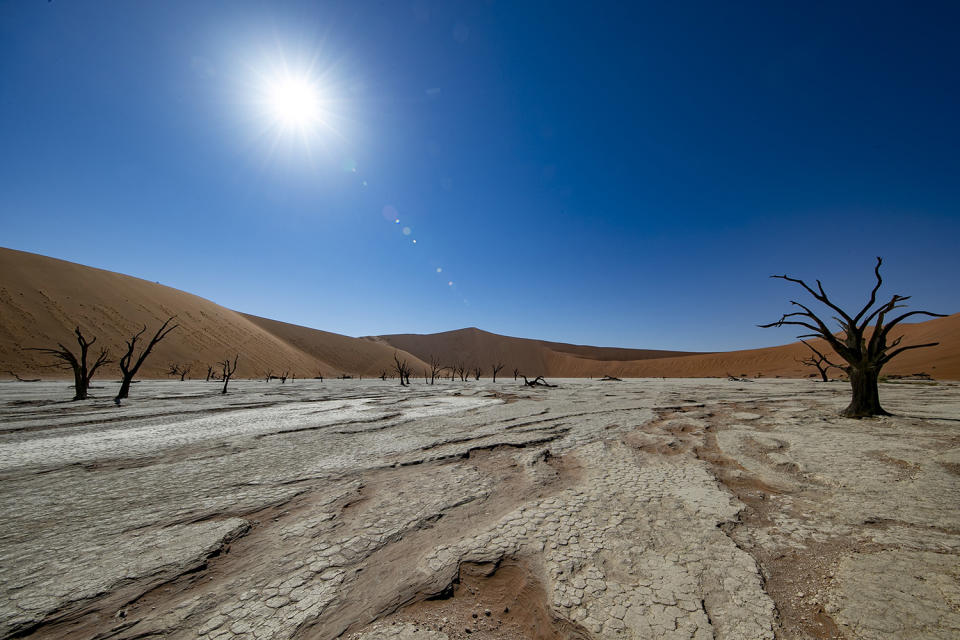

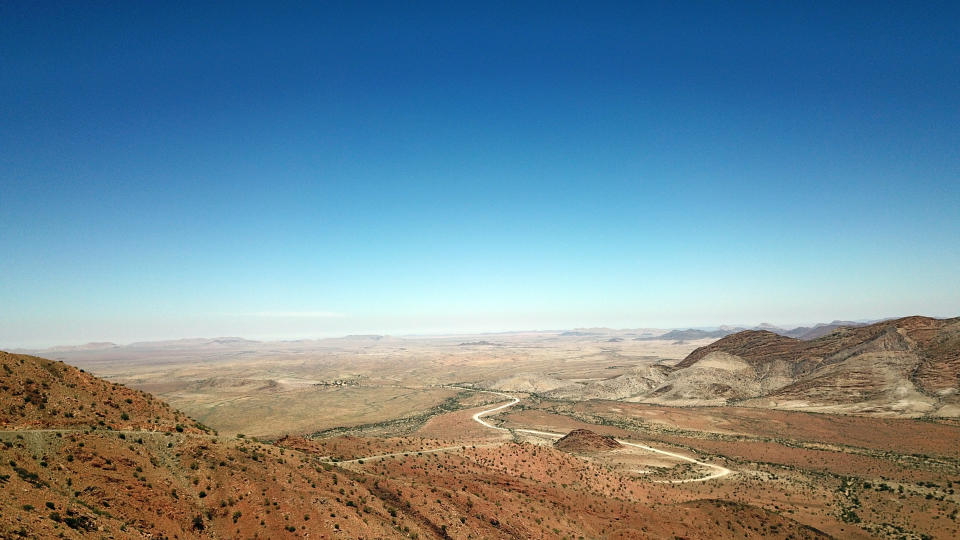


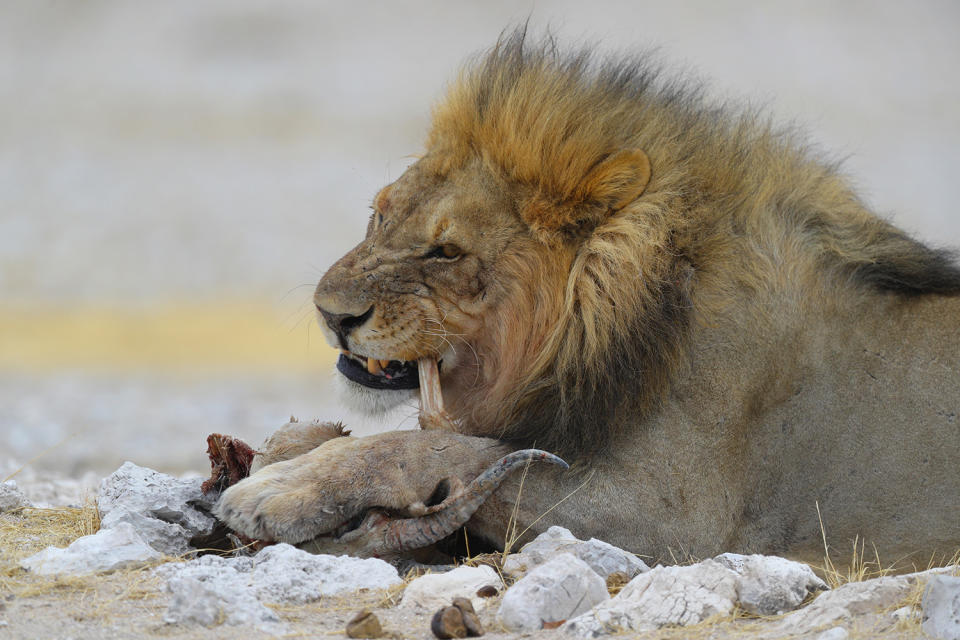



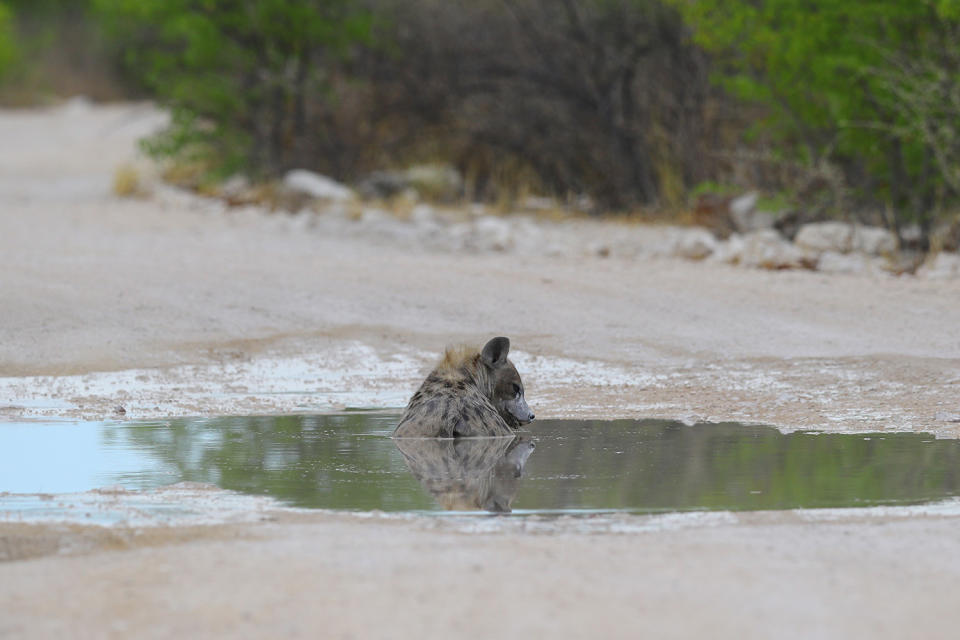








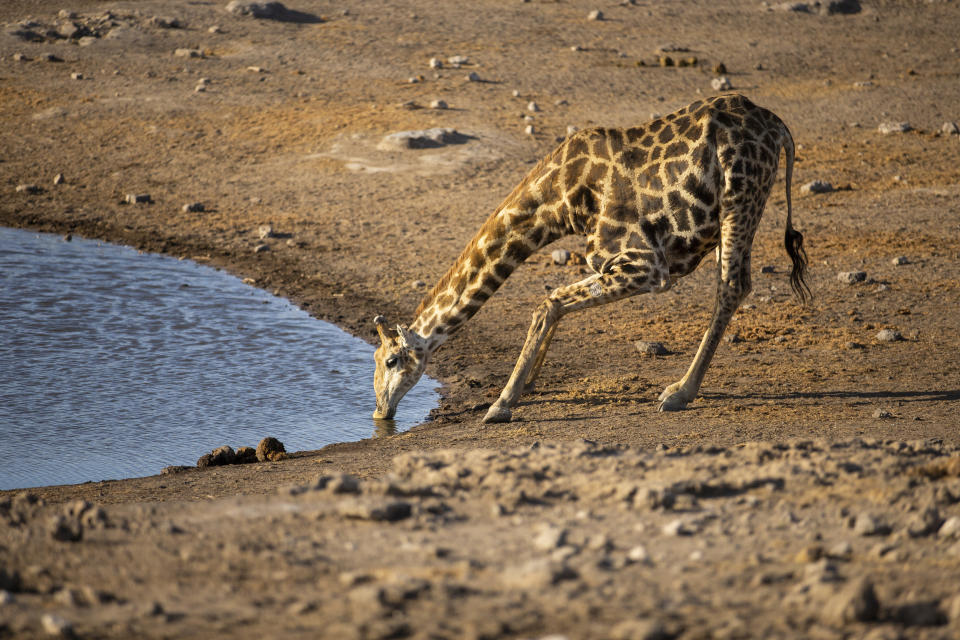


See more news-related photo galleries and follow us on Yahoo News Photo Twitter and Tumblr.
Read more from Yahoo News:


